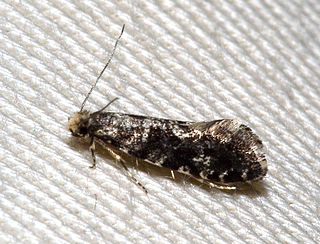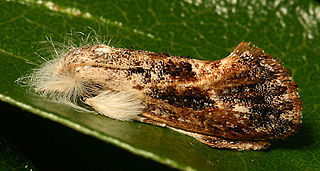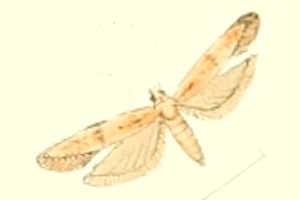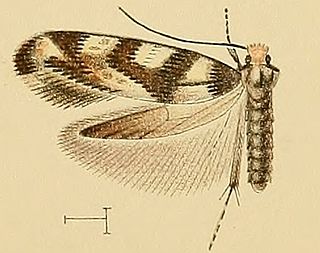
Tineidae is a family of moths in the order Lepidoptera described by Pierre André Latreille in 1810. Collectively, they are known as fungus moths or tineid moths. The family contains considerably more than 3,000 species in more than 300 genera. Most of the tineid moths are small or medium-sized, with wings held roofwise over the body when at rest. They are particularly common in the Palaearctic, but many occur elsewhere, and some are found very widely as introduced species.

Acrolophidae is a family of moths in the order Lepidoptera. The family comprises the burrowing webworm moths and tube moths. The family holds about 300 species in five genera, which occur in the wild only in the New World. It is closely related to the Tineidae family.

Metanarsia is a genus of moths in the family Gelechiidae.

Neofriseria is a genus of moths in the family Gelechiidae.

Vladimirea is a genus of moths in the family Gelechiidae.

Infurcitinea is a genus of the fungus moth family, Tineidae. Therein, it belongs to the Meessiinae, one of the larger fungus moth subfamilies.

Edosa is a genus of moths belonging to the family Tineidae.
Perissomastix is a genus of moths belonging to the family Tineidae.

Infurcitinea toechophila is a moth of the family Tineidae. It is found on the Canary Islands.
Metanarsia amseli is a moth of the family Gelechiidae. It is found in southern Iran.

Infurcitinea ignicomella is a moth of the family Tineidae. It was described by Heydenreich in 1851. It is found in large parts of Europe, except Ireland, Great Britain, Belgium, the Iberian Peninsula, Ukraine and most of the Balkan Peninsula.

Infurcitinea argentimaculella, the silver-barred clothes moth, is a moth of the family Tineidae. It was described by Stainton in 1849. It is found in most of Europe, except Ireland, Portugal, Latvia, Lithuania and the Balkan Peninsula.
Aethes amseli is a species of moth of the family Tortricidae. It was described by Razowski in 1967. It is endemic to Afghanistan.
Infurcitinea tauridella is a moth of the family Tineidae. It is found in Bulgaria, Greece, Turkey and the eastern part of European Russia.
Infurcitinea vanderwolfi is a moth of the family Tineidae. It is found in Bulgaria, Greece and Croatia.

Tinea pallescentella, the large pale clothes moth, is a moth of the family Tineidae. It is found in most of Europe. It is also present in western North America, where it has been recorded from California. There are also records from South America and Australia.

Nemapogon clematella, the barred white clothes moth, is a moth of the family Tineidae. It is found in most of Europe and in North America, where it has been recorded from Maryland and North Carolina. The habitat consists of woodlands.
Cnephasia amseli is a species of moth of the family Tortricidae. It is found on Sicily and Malta and in North Africa, where it has been recorded from Tunisia.

The Meessiinae are a subfamily of moth of the family Tineidae.
Infurcitinea albicomella is a species of moth belonging to the family Tineidae.









